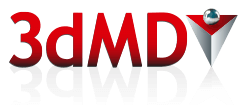Date: May 2025.
Source: 6th International Symposium on Biomaterials, Ljubljana, Slovenia.
Presenter: Bojana Krneta Đokić, Department of Dental and Jaw Orthopaedics, Faculty of Medicine, University of Ljubljana, Slovenia.
Objective: Our aim is to demonstrate the application of the stereophotogrammetry imaging system in clinical settings by assessing the effectiveness of orthodontic-orthopaedic treatment of Class III malocclusion as early as in the early mixed dentition phase. When initiated during the prepubertal period, orthodontic-orthopaedic therapy can influence jaw positioning, which is accompanied by corresponding changes in the surrounding soft tissues.
Materials and Methods: Study aimed to assess the effectiveness of rapid maxillary expander combined with face mask therapy by analyzing three-dimensional soft tissue facial features in prepubertal children with Class III malocclusion (Mandall et al., 2010). The study included 64 white children aged 6 to 8 years, divided into two groups: 32 with Class III malocclusion (CLIII) and 32 without (non-CLIII).
Results: We used the 3D stereophotogrammetry technique (3dMD) to capture three-dimensional facial surface images. This technology is based on the principle of triangulation, employing multiple cameras and various light sources with specific wavelengths for enhanced accuracy. The cameras simultaneously capture images from different angles, forming a triangle between the object and the cameras. The 3dMD setup includes three synchronized digital cameras on each side of the face (one in colour, two in infrared). A computer system processes and calibrates the 3D coordinates of both facial sides. A key advantage is the extremely fast scan time of 1.5 milliseconds, making it highly suitable for paediatric patients, with an accuracy of 0.5 mm (Kau et al., 2010).3D facial surface scans were captured at two time points—before treatment (T0) and after treatment (T1). The captured 3D images were resized in the Rapidform software, aligned using the best-fit algorithm, and then rescaled for analysis. Results: We generated both qualitative and quantitative outputs displayed as colour maps. At T0, the CLIII group displayed less pronounced midface features and a more prominent mandible compared to the control group. By T1, no statistically significant differences remained between the groups, suggesting effective treatment outcomes. After the treatment, noticeable changes were observed. Surface-based comparisons post-treatment indicated forward movement in the midface and upper lip regions. In contrast, the lower lip and chin moved backward in the CLIII group but slightly forward in the non-CLIII group.
Discussion: Orthodontists can influence facial appearance and soft tissue positioning by modifying the underlying skeletal structures and dentition. Enhancing facial aesthetics and achieving balanced facial proportions are key factors in evaluating the success and long-term stability of orthodontic interventions. By applying the 3dMD imaging system, we were able to assess the outcomes of an orthodontic treatment approach. The method’s non-invasive nature, precision, simplicity, and child-friendly design make it ideal for routine clinical use—for both diagnosis and treatment—across all age groups, including young children.
Conclusions: Following rapid maxillary expander and face mask therapy, there was an anterior displacement of the maxilla, and posterior movement of the mandible. These changes brought the facial proportions of CLIII patients in line with those of non-CLIII peers, contributing to a more balanced and harmonious facial appearance. The findings were achieved using a non-invasive stereophotogrammetry 3D imaging method.
Article: Stereophotogrammetry – the clinical use.
Authors: Bojana Krneta Đokić, Department of Dental and Jaw Orthopaedics, Faculty of Medicine, University of Ljubljana, Slovenia.
